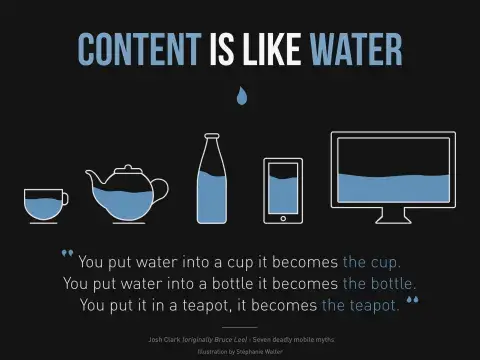Website personalization takes into account that users have different motivations, devices, locations and time constraints. With current technology, marketers can now gather specific information about what a website visitor is searching for and translate their visit into a higher conversion.
Itai Sadan, co-founder and CEO of DudaMobile, a mobile website creation platform states: “Organizations spend tens or hundreds of thousands of dollars, and sometimes even millions of dollars, to create robust dynamic web experiences”
DudaMobile recently released inSite, a service that adds dynamic web content to pages based on the customer’s behaviour in a bid to create personalized viewing experiences.
Here is a list of five ways companies can start to increase their conversion rate through website personalization:
Visitor frequency can change your conversion rate
Visitor frequency often determines different user experiences. A first time visitor will most likely look for different information than someone who has visited the site repeatedly.
LegalAdvice’s marketing officer David Reischer suggests that tracking each user individually can offer visitors different user experiences: “We utilize a cookie to track a returning visitor so that we can direct them to the most appropriate and relevant page. This makes site navigation easier for repeat users.”
First time visitors should have access to a contact form to capture leads, a phone number or business address or a video tutorial that explains a service or product.
DudaMobile’s CEO explains the system for frequent visitors: “For frequent visitors, add a spot to sign up for a mailing list or add information about new products or services”
Geo-location is also important
Geo-location blends offline and online marketing. Knowing where your user is located when visiting your website is a game changer for marketers – “Online we can follow our customer’s individual buying journey, optimizing it every step of the way” explains Bart Heilbron from BlueConic. He continues: “However, we were never able to use these insights in our offline interaction. With geo-location, we are now able to.”
If a potential customer is visiting your website from a very close distance there’s a high chance they will become a customer if they see an address and a coupon that says “Come in today and get 20% off”. Restaurants can use an open table button to make reservations quickly or a Google Map that provides directions to the businesses location.
Always adjust your content
Adjusting your content to certain seasons, weeks or to your particular business hours can increase your conversion rate as well. You can replace your phone number with a contact form during the time your business is closed – this can help you avoid missing out on potential customers who want to reach you outside business hours.
“The ability to offer different products over the course of a day based on targeted trends, habits or culture will increase conversions,” said CEO WebiMax, Ken Wisnefski. “For example, a restaurant offers a different menu throughout the day as they switch from lunch to dinner.”
Recognize special events and holidays
Recognizing special events or holidays is a great way to connect with your customer and personalize your website. You can change your website’s theme during Valentine’s Day or during the 4th of July. “This could have a positive effect on customer engagement, and in turn conversion,” said Sadan from DudaMobile.
Adapt your content to your visitor source
Knowing your visitor source and adapting accordingly can have a great impact on your conversion rate simply because you can create dedicated landing pages for your potential customers. According to Sadan, “Visitors that come to your site from an email marketing campaign or as a referral from another site should receive dedicated messaging that is aligned with the messaging they saw in the email or the referring site. Offering a coupon at this point could also be a good idea.”








